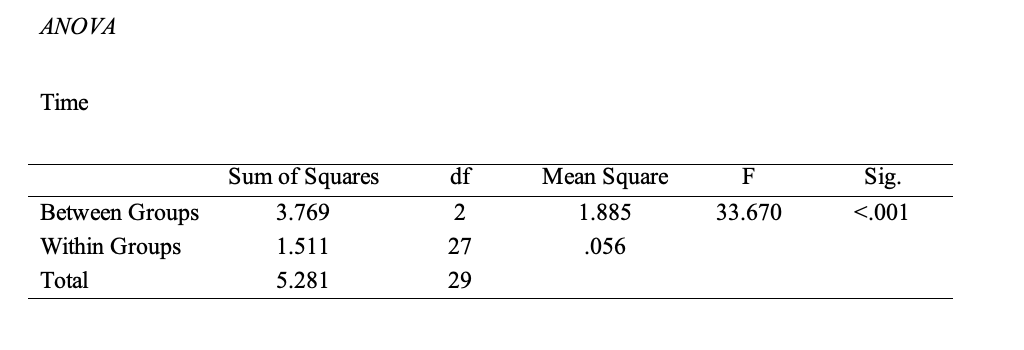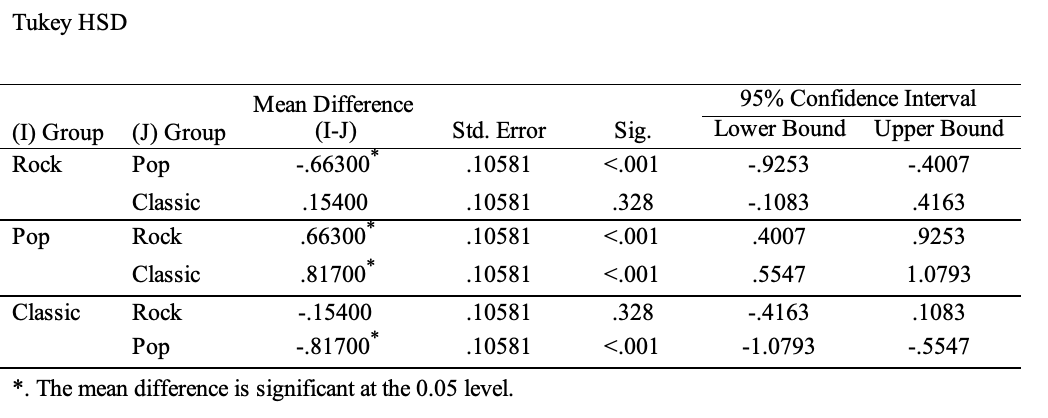Introduction
Conducting statistical analyses of data is a valuable practice for making decisions based on facts rather than experience or personal biases. Such data-driven decisions are much less biased and have a higher potential for achieving reliable results. In this report, statistical analysis is applied to a dataset containing time information on three groups based on the type of intervention. These interventions included listening to the music of a particular genre, namely Rock, Classical, and Pop. The critical research hypothesis is based on the assumption that the group listening to classical music had higher outcomes, meaning that this group had a lower mean of the independent variable.
Discussion
Since the only dependent variable was measured on a quantitative scale, and there were more than two groups in the set, a one-way ANOVA would be appropriate for statistical analysis. An ANOVA test is an alternative to standard t-tests performed on more than two groups (SL, 2021). The point of such a test is to determine the significance of the differences between the groups. In other words, if the mean values of a particular group of three would be significantly different from the others, an ANOVA would determine this, and subsequent posterior tests would detect the location of such differences. SPSS is used to perform a one-way ANOVA test.
Table 1 shows the results of the descriptive statistics for the three groups according to the type of intervention. At first glance, it appears that the mean of the classical music group (M = 3.08, SD = 0.20) is lower than the others, but the significance of such differences must be substantiated by an inferential test. Specifically, Table 2 reports the results of the one-way ANOVA test performed. As can be seen, there is a significant difference between the groups, F(2,27) = 33.670, p <.001. The low p-value allows to reject the null hypothesis of no difference and confirms that the groups did differ in mean values. Table 3 contains information about the results of the posterior Tukey test: significant differences (p <.05) were observed between the Rock and Pop groups and between Pop and Classic but were not observed for the other pairs.
Table 1. Results of descriptive statistics for the data

Table 2. Results of ANOVA test for the data

Table 3. Tukey test results for locating differences

Conclusion
From the results, we can conclude that the mean times were indeed lower for the classical group compared to the pop group but were not different for the rock group. At the same time, the mean for the pop band differed significantly from all other types of interventions, which means that using pop music as an intervention significantly increases the mean time of the independent variable.
Reference
SL. (2021). One-way ANOVA in SPSS Statistics. Laerd Statistics. Web.